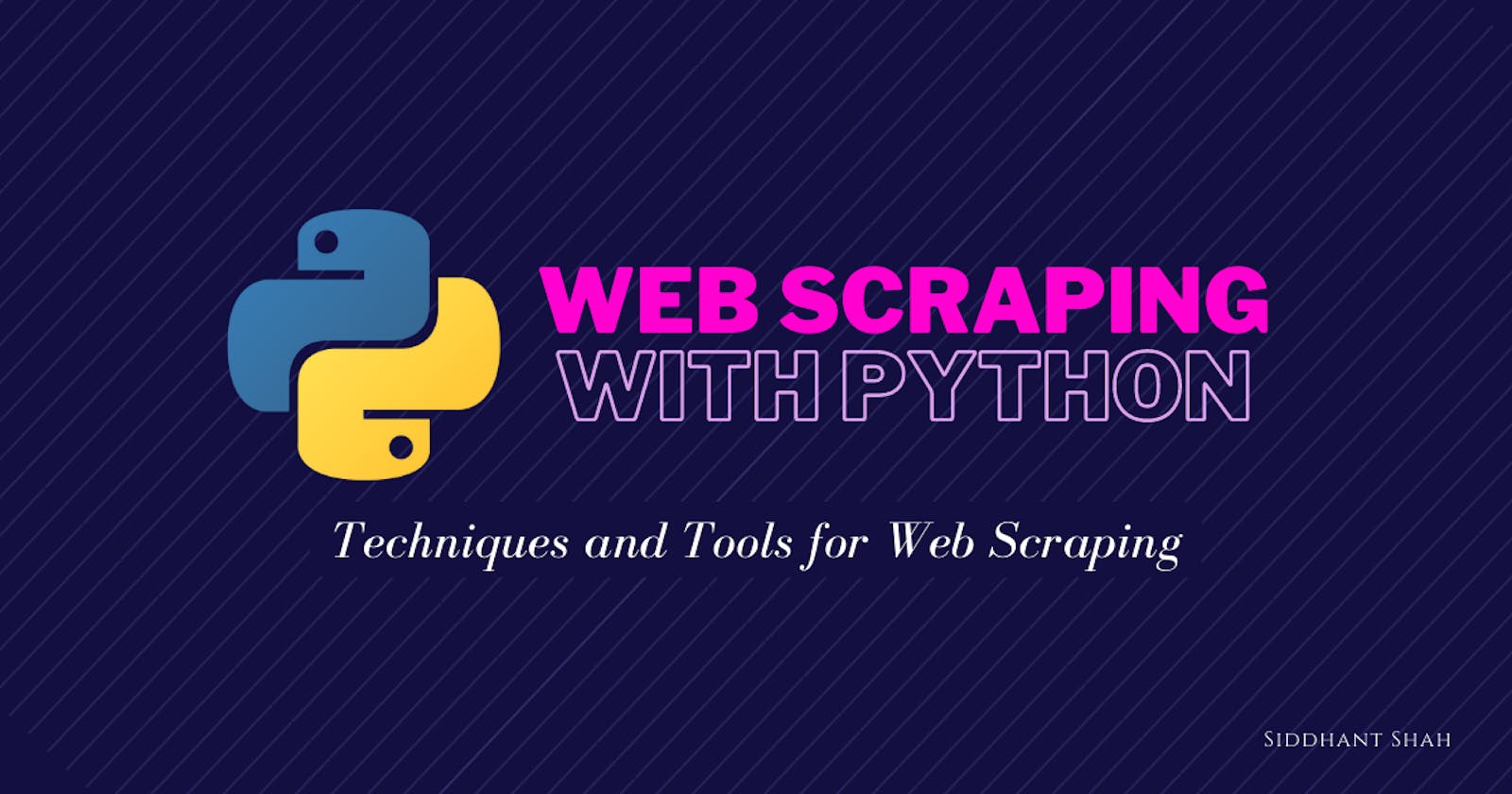Techniques and Tools for Web Scraping
Explore the various web scraping tools available and how to use them to gather valuable insights and data from the web
Table of contents
Web scraping has become a vital tool for businesses and individuals who need to collect data from the internet. With the ever-growing need for data-driven insights, web scraping has become more popular than ever before. In this blog, we will provide an overview of popular web scraping tools and techniques.
Requests
Requests is a Python library that is used for sending HTTP requests and working with web APIs. It is easy to use and is widely popular for web scraping due to its simplicity. It provides functionalities for handling HTTP/1.1 headers, cookies, query parameters, and authentication.
Beautiful Soup
Beautiful Soup is a Python library that is used for parsing HTML and XML documents. It is commonly used for web scraping as it can easily navigate through the HTML code and extract relevant information. Beautiful Soup has a simple syntax that makes it easy for beginners to get started.
Scrapy
Scrapy is a Python framework that is used for web scraping and web crawling. It is one of the most popular web scraping frameworks and provides features like automatic data extraction, data processing pipelines, and spider management. It is easy to scale and can be used to scrape large amounts of data quickly.
Selenium
Selenium is a web testing framework that is used for web scraping and web automation. It is commonly used for scraping dynamic websites that require user interaction. Selenium can interact with elements on a webpage and perform actions like clicking buttons or filling out forms.
Playwright
Playwright is a browser automation library that is used for web scraping and testing. It provides a more modern approach to web scraping by using headless browsers like Chromium, Firefox, and WebKit. It allows developers to interact with websites as if they were using a real browser.
Techniques
Several techniques can be used for web scraping, including:
DOM parsing - This technique involves parsing the HTML code of a webpage to extract relevant data.
API scraping - This technique involves accessing the website's API to extract data.
Regular expressions - This technique involves using regular expressions to extract data from the HTML code of a webpage.
XPath - This technique involves using XPath expressions to navigate through the HTML code of a webpage and extract data.
Conclusion Web scraping has become an essential tool for businesses and individuals who require data-driven insights. There are several popular web scraping tools and techniques available, each with its own set of advantages and disadvantages. The right tool and technique will depend on the specific requirements of the web scraping project. With the right tools and techniques, web scraping can provide valuable insights and competitive advantages in a wide range of industries.

